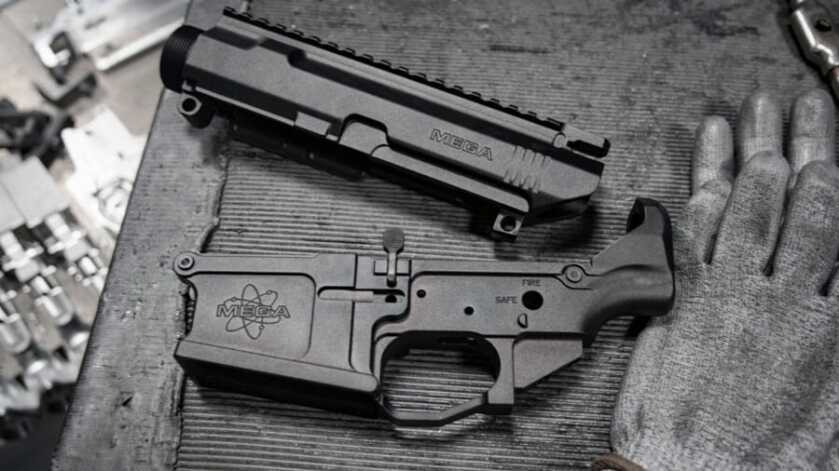
Zev Technologies just announced the return of the Maten family of AR-style builder’s sets and components. The Maten lineup was Mega Arms’ flagship line of standard- and large-frame AR rifles and parts.
For now, Zev is bringing back the Maten mostly as builder sets but they are bringing the Maten with premium milled parts in their SR-25/DPMS and AR-15 patterns as well as more budget-friendly forged AR-15 receivers.
The Maten builder’s kits include both the upper and lower receivers or an upper with a modular, free-floating M-Lok handguard in 12-, 14- and 16-inch lengths. These combos are being produced for both large-frame and standard AR pattern sets.

The receivers are machined from billet and forged 7075-T651 alloy aluminum with what Zev calls their “True Black” Type III Class 2 hard coat anodized finish.
The milled billet Maten receivers are ambidextrous, and include the pre-installed proprietary parts. Other milled receiver features include oversized integral trigger guards and enlarged, flared magwells on top of the Maten’s signature style.

The forged options are standard AR-15 receivers although they are made to meet higher standards and, of course, they come with the atomic Mega logos. All of these parts are priced in line with the original Mega Maten lineup and will be in huge demand.
Entry-level forged AR-15 receivers start around $130 which is competitive with other quality parts. The billet AR-15 lowers run $269 and the uppers start at $225 up to $341, with receiver sets starting at under $500.
See Also: ZEV Technologies Showcasing Their Core Duty Rifle
The SR25/DPMS parts run a little higher, starting at around $350 with sets running from the low $500 range up to just shy of $700.
It’s hard to tell if Zev’s timing in returning the Maten product line right now couldn’t be better or couldn’t be worse, but one thing’s for certain: anyone who can get their hands on these parts will grin from ear to ear.
For more information about the Maten and the rest of the Zev Tech lineup, check them out online.

I can understand that there is a manufacturing cost differential between billet and forged, but can someone tell me if there is functionally any benefit of billet over forged that justifies paying so much more?
Billet parts can have features that can’t be added to forgings, since forgings are so standard. So you can add things like ambidextrous controls more easily to billet parts.
Because they require more tool time, they cost more. In some ways forged parts can be stronger, but that depends on a lot of things related to the way a comparable billet part is made. A well made billet part can be just as strong as a forged part, but a cheaply made billet part can have weaknesses machined into it.
Think of it like the difference between a home-cooked meal and a store-bought meal. The store-bought meal (forged) doesn’t change much, and the home-cooked (billet) meal really depends on the cook.